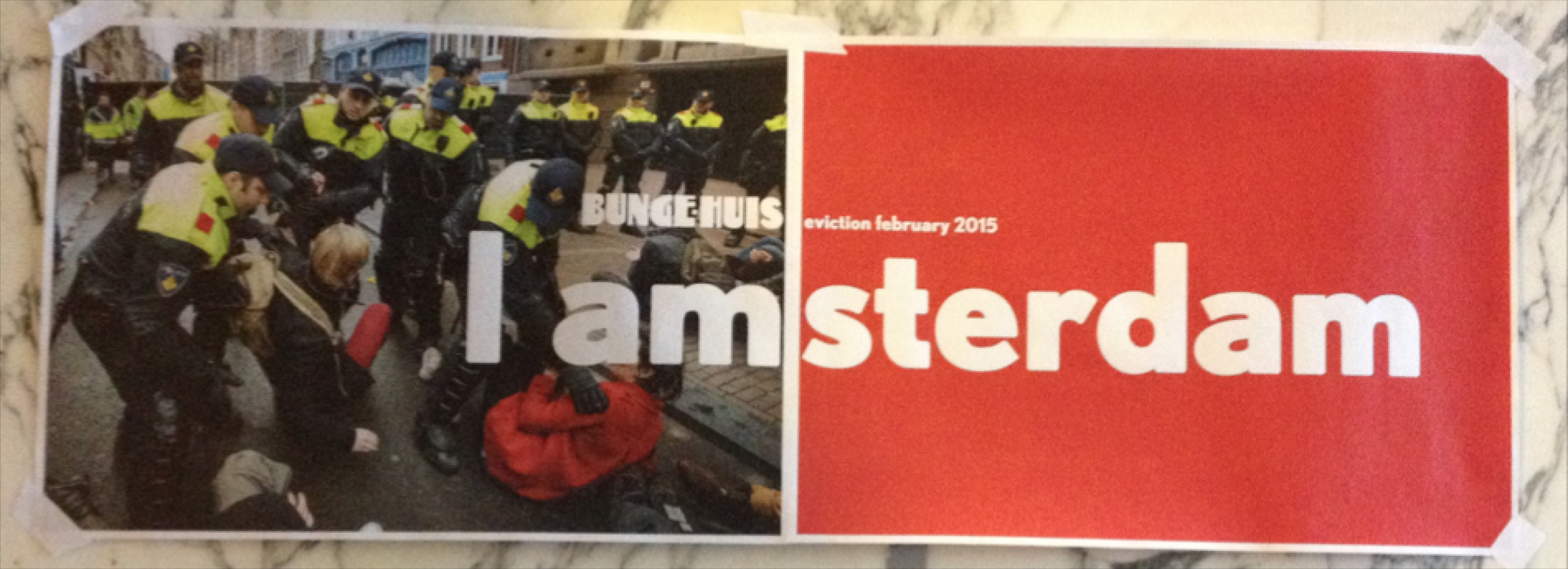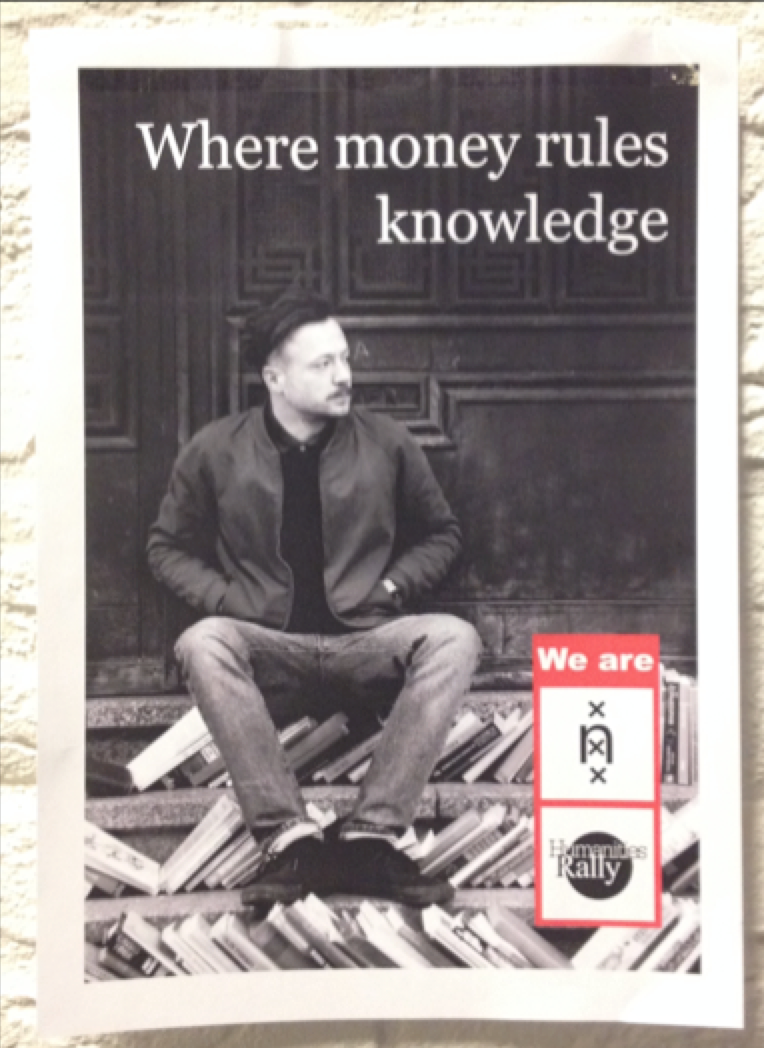

Abstract
Through a close reading of two found posters, I consider the concepts of creativity and university (as home for the humanities) within the ongoing Amsterdam-based manifestation of the humanities crisis as motivated by the New University movement. The posters were found in the student-reappropriated Maagdenhuis (the University of Amsterdam’s (UvA) business development building) and immediately en- gage in the relationship of the UvA and Amsterdam-as-creative-city. I problematize this relationship’s prioritization of the experience and aesthetic of the creative city by market-driven values and desired global positioning; and the divide in values between the humanities, its University, and city. I argue that this prioritization locally and globally displaces the humanities and barricades the concept of university. Simultaneously, the UvA marketing team brands its educational experience and conception of an excellent academic institution by the appearance of the values of the very faculty it delegitimizes. It commoditizes the aesthetic of the conditions that it destroys in attempt to sell its image to the global (student) consumer from which it may reap the most immediate financial and speculative branded benefit. I argue the posters remain in an informative and reactionary realm because of their reliance on the visual vocabulary of the institutions of their critique. They continue to engage within an exploitative binary and hinder the possibilities of the movement-as-rupture’s visual imaginary. This is a shortcoming of the possible rethinking of more extreme questions about the place and practice of the humanities and its role in the creative city.
Methods
I enter my analysis by focusing the posters’ content, represented entities (the UvA as educational institution and urban institution; the humanities; Amsterdam as creative city via the Iamsterdam logo), and design strategy. With deep critique, I align the goals of the Iamsterdam branding campaign with pop urban studies personality Richard Florida’s idea of the “creative city,” which revolves around its economic growth based in the “formula” of technology, talent, and tolerance.
Ideas
- The branded Amsterdam-creative city’s success is based on celebrating and enforcing a hegemonic regime of creativity de ned by specific forms of economic growth in its practice and identity, locally and globally.
- The first poster’s refusal to show humanities’ student faces, their building, and the scene of their actions from the nearby experience of “Amsterdam” down Spui boasts the ultimate betrayal of the UvA, the humanities’ home institution, to its own faculty: this action dehumanizes the faculty.
- In turning the humanities building “Bungehuis” into the Soho
House, a playground for the globe-trotting creative elite, the University and the city of officially delegitimize the humanities’ form of knowledge and creativity, and situate and smother the humanities crisis within its ambassador city. - The UvA marketing team brands its educational experience and its conception of the situation of academic excellence by conditions that align with the values of the very faculty it has delegitimized.
- It commoditizes the aesthetic of the experience of knowledge and creative production that it is destroying and attempts to sell its image to the international student-consumer (as national students attend for little tuition).
- The poster’s appropriations, juxtapositions, and usages of the same language as methods in the poster designs symbolize the stunted potential of the movement’s unique momentum by remaining within this exploitative binary.
Concluding Question
What can we garner from these scenes uniting creativity, the urban space as geolocation and site of branded global cosmopolitanism, and economic initiative to maintain the city a “global destination” as forecasting a form of neogentrification: gentrification in the computational era?🝏